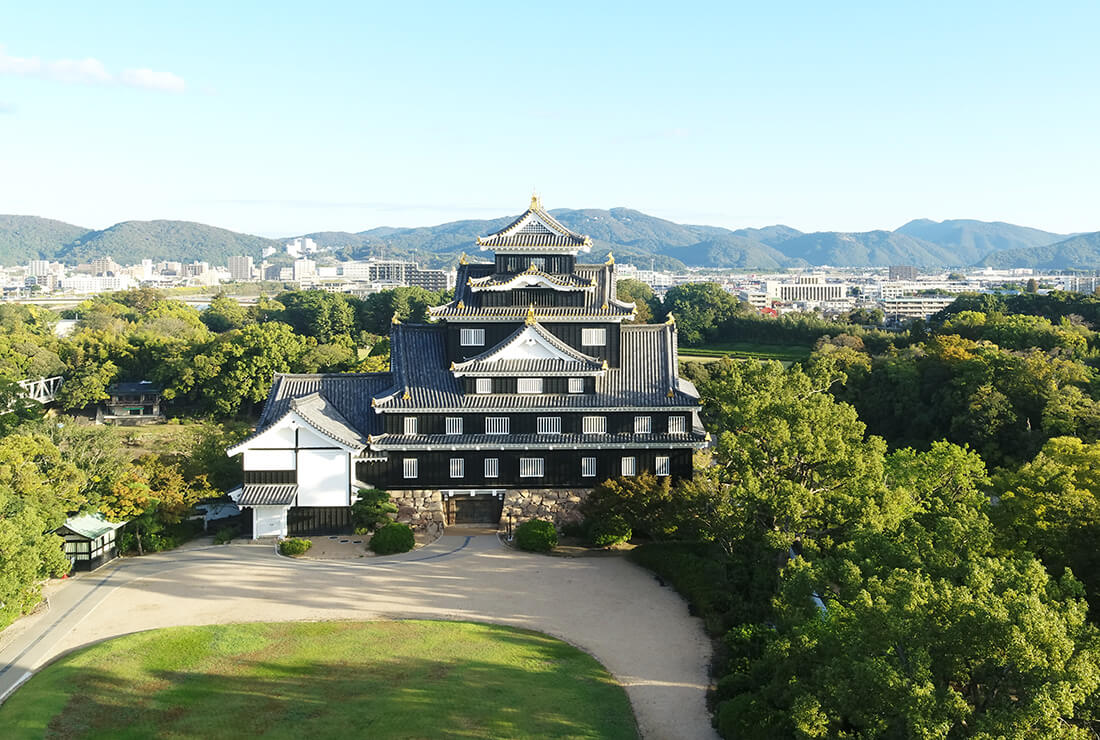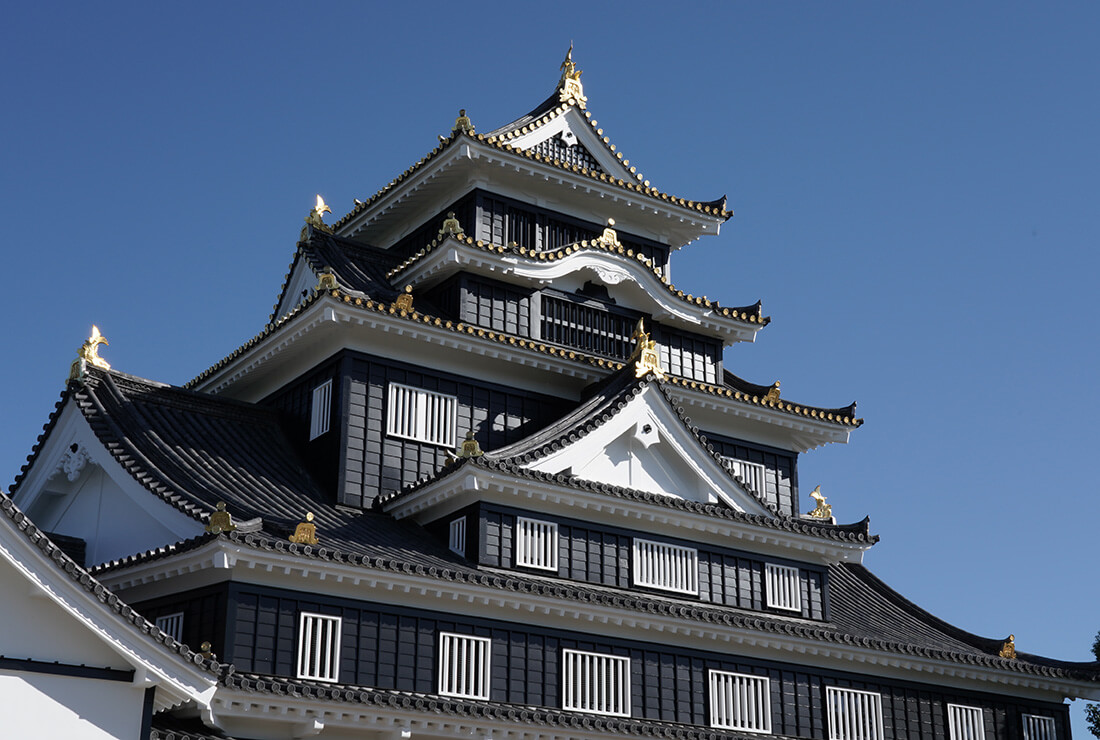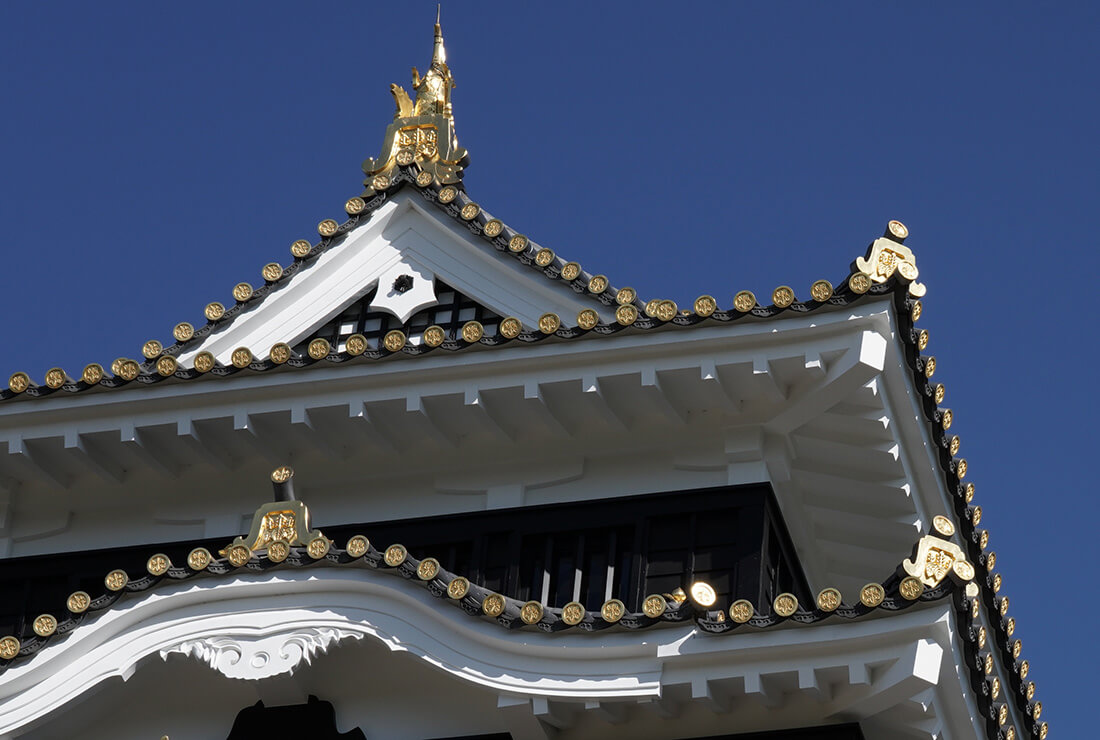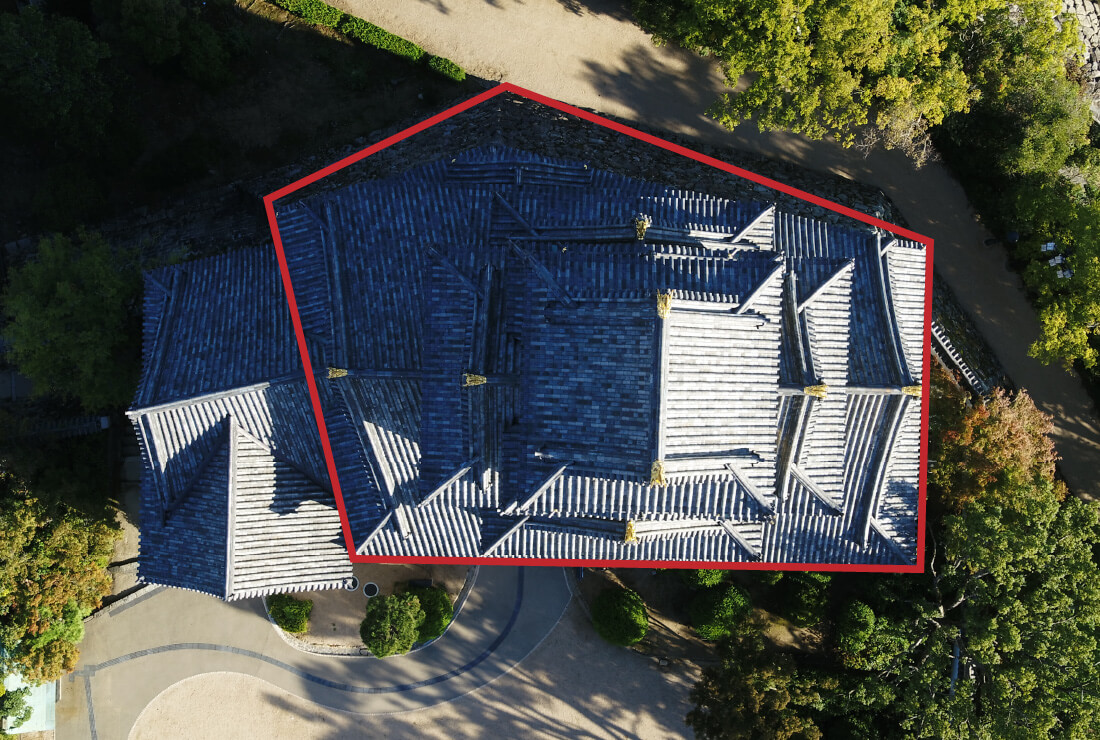
There were three hills called Okayama, Ishiyama, and Tenjinyama near the site where present-day Okayama Castle is located along the Asahi River. It was Ukita Naoie who acquired the castle on Ishiyama and made it his headquarters, bringing the Okayama area to the forefront during the Warring States period. His son, Hideie, determined to place Honmaru (main enclosure and keep) on the hill of Okayama and built Okayama Castle that stands to the present day. (It is said that the Tenshu (castle tower) was completed in 1597.) According to documents from the Edo era, the castle was built under the instructions of Toyotomi Hideyoshi. In addition, the branching channels of the Asahi River were devised as they are today to protect the north and east sides of the castle and utilized to create moats, and a castle town was built that stretched long in the north-south direction between the moats. In this way, the prototype of the city center of present-day Okayama City was established, laying the foundations for the name of the city and prefecture. Later, the castle and the castle town were further expanded by successive castle lords, Kobayakawa Hideaki and the Ikeda Clan that continue to this day.
Introduction to Tenshukaku

As was the case with Oda Nobunaga’s Azuchi Castle and Toyotomi Hideyoshi’s Osaka Castle, the exterior walls of Okayama Castle’s Tenshu are covered with black clapboards, and because of the appearance, Okayama Castle also became known as “Ujo (crow castle).” Since gilded roof tiles from the era of Ukita Hideie have been excavated, it is presumed that during the construction of the castle, gilded roof tiles were used throughout the main buildings of the castle to present a dignified and powerful feudal lord under the Toyotomi regime. For this reason, the castle also became known as “Kin-ujo (golden crow castle).”

Another feature of the castle is that a flat surface of the stone wall and the first floor of the Tenshu are in a scalene pentagonal shape, which is said to be due to the land shape of the hill of Okayama where the castle was built. In addition, a salt warehouse was attached to the west side of the Tenshu as a connecting turret, and there was an entrance to the Tenshu.

The Tenshu was a precious architectural legacy that remained until after the Meiji Restoration and its detailed drawings were made in the early Showa era. However, the Tenshu was destroyed by fire during World War Ⅱ. In 1966, the Tenshu was reconstructed as a reminder of the past.
- HOME
Learn About Okayama Castle - History